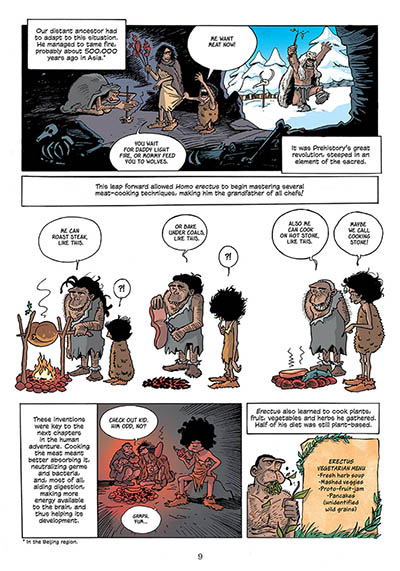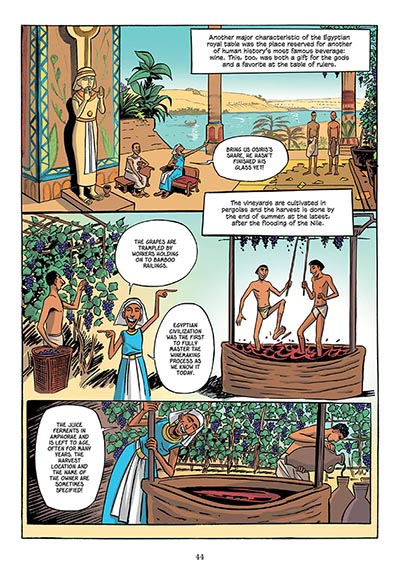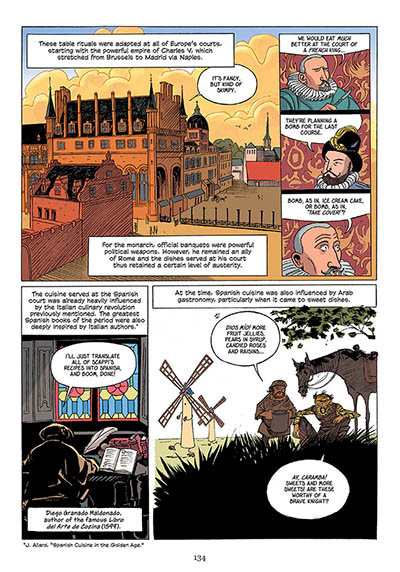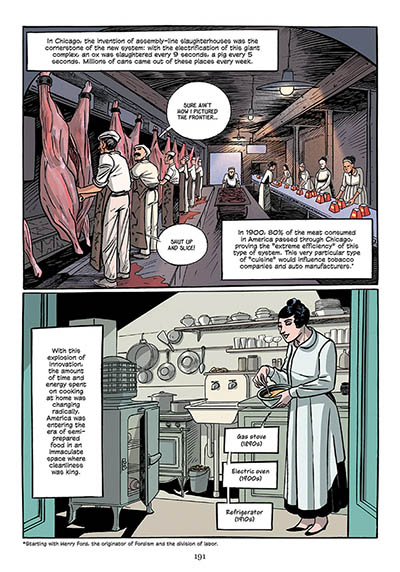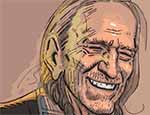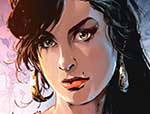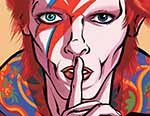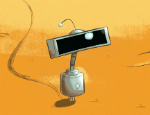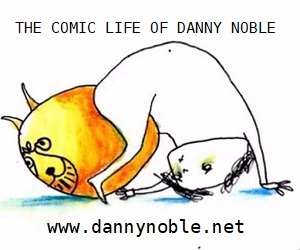In 2020, French journalist Benoist Simmat delved into one of his country’s oldest obsessions. The result was a graphic history of wine, tracing its origins from the Middle Ages to our convenience stores. He did it with flair, breaking down a lot of information into bite-sized chunks, and has adopted the same approach to now explaining how we eat the way we do. The Incredible Story of Cooking: From Prehistory to Today: 500,000 Years of Adventure — written by Simmat, illustrated by Stéphane Douay, and translated by Montana Kane — is every bit as entertaining as it sounds.
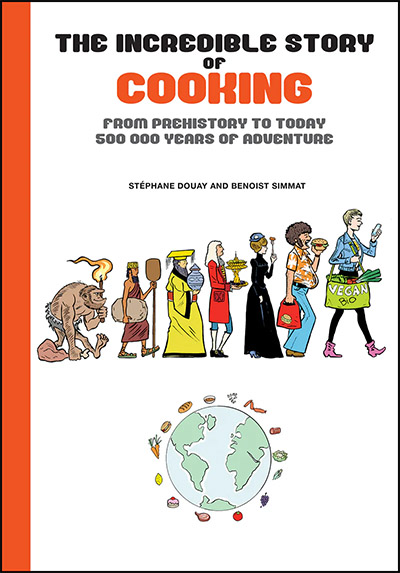
The biggest takeaway is how The Incredible Story of Cooking reminds us that everything we consume is taken for granted, because we never think about a world before the invention of fire. We know about hunter-gatherers, have some idea of how edible fruit and vegetables were unearthed, but gloss over the fact that everything was once swallowed raw, with no concept of seasoning. It is only when one stops to look at the science, and eventually art, that went into transforming these uncooked ingredients into meals, that we start to appreciate techniques like baking, freezing, and brewing.
Naturally then, given how little one presumes most people know about the history of cooking, there are all kinds of surprises revealed on every page. Who knew, for example, that the ancient Romans did not eat sheep or oxen because of how useful they were? Or that the eating of spices was encouraged in some cultures simply because it gave the eater a preview of paradise? It is to Douay’s credit that none of these facts and figures are disseminated in a way that could be called pedantic, thanks to the caricatures and jokes strewn liberally across most panels.
Attempting a subject as vast as this comes at a price, of course, because the graphic format has limitations that reams of prose do not. It is still an admirable job though, because of how the history of cooking is broken down chronologically, while exploring smaller paths taken by various cultures. It cannot have been easy and there is clearly a great deal of thought given to how lengthy discursive passages can be broken down in the least monotonous ways. It makes for a great introduction to anyone interested in food, as well as a primer that can kickstart individual journeys of discovery.
The book closes with 22 recipes for some dishes mentioned, going back to ancient times and rated by degree of complexity. One can therefore attempt to recreate Herring and Potatoes in Oil from Normandy, Aztec Tacos from Mexico, or a Pork Vindaloo from India, if one feels adventurous enough in a modern kitchen. Simmat also includes a helpful list for further reading and a bibliography that goes down a few more rabbit holes.
The Dutch scientist and writer Louise Fresco once had an interesting comment to make about food. She referred to it as something holy: “not about nutrients and calories. It’s about sharing. It’s about honesty. It’s about identity.” Simmat and Douay make us stop and think about the plates routinely placed before us, reminding us of the long journeys undertaken by our common ancestors, and what they had to do to take what the Earth provided and make it palatable.
Benoist Simmat (W), Stéphane Douay (A), Montana Kane (T) • NBM Publishing, $34.99
Review by Lindsay Pereira





